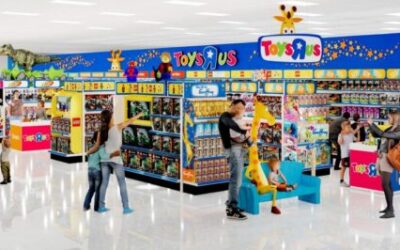Salesforce Survey: 36% of Retail Employees Already Using Generative AI


Retailers have been eager to jump on the generative AI bandwagon: according to a new survey conducted by Salesforce and the Retail AI Council, retail executives estimate that 36% of their employees already are using generative AI today, with that figure projected to rise to 45% by 2025. Additionally, 93% of these retailers say they’re already using generative AI to support personalization of customer-facing communications like emails and product recommendations.
What’s even more remarkable about these adoption rates is how quickly they have risen. “Generative AI has only been publicly available as a friendly user interface since November 2022, and it’s already being embedded in retail operations such as customer service, marketing and even new shopping experiences,” said Michelle Grant, Director, Strategy and Insights for Retail at Salesforce in an interview with Retail TouchPoints.
The survey, of 1,390 retail decision-makers from Canada, the U.S., France, Germany, Italy, Spain, the UK and Australia, also reported that 81% of respondents already have a dedicated AI budget, with an average of 50% assigned to generative AI. The top three areas where retailers plan to use generative AI are in customer service, marketing and store operations.
In part because the generative AI adoption curve has been so steep, concerns about the technology — and the quality of the data that informs its responses — have taken on greater urgency. Executives’ top concern, at 50%, is bias, when AI algorithms product prejudiced results or responses. Retailers also see hallucinations (38%) and toxicity (35%) as major risks.
The survey also indicated that retailers are responding to these potential dangers: 62% have established guidelines to address transparency, data security and privacy around the ethical use of generative AI, as well as commitments around ensuring trustworthy and unbiased outputs.
No Tolerance for ‘Garbage In, Garbage Out’ with AI
The root causes of many of these concerns are familiar ones for retail and technology executives: data quality and data governance. “It’s not a surprise how important the data is to AI; that’s the bedrock in this report,” said Rob Garf, GM of Retail and Consumer Goods at Salesforce in an interview with Retail TouchPoints. “Retailers are thinking about data readiness, data governance and data trust, but our data shows that there’s a way to go.”
Of course, data management and cleanliness have been challenges in retail long before generative AI: “Retailers have been collecting data since the advent of the digital cash register, but they haven’t done a great job of making it actionable,” said Garf. “We’ve talked about ‘garbage in, garbage out’ for 30 years, but ‘garbage out’ is not acceptable with this application. There’s more of a need for scrutiny and establishing trust before [generative AI] is exposed to customers and employees.”
Earlier AI solutions, such as those providing predictive analytics, also required clean, accurate data to operate at peak efficiency, but “because generative AI has been shown to be productive across so many use cases, change management is needed to unlock the data that’s been sitting there trapped in expensive data silos,” said Grant. “It needs to be operationalized.”
When retailers are able to accomplish this, the results can be extremely beneficial. “If a retailer has the right data and it’s indexed correctly with metadata, it gives you a really good idea of what products [your customer] bought and also what they didn’t buy, as well as what they’ve called and complained about,” said Garf. “The attributes are vast if you have that 360-degree view.”
Will AI Become the New UI?
Generative AI has grown so quickly, in fact, that it has the potential to essentially become the new baseline user interface for shopping. “The idea of search engines are being totally reimagined, along with SEO [search engine optimization],” said Garf. “The way SEO has been fine-tuned over the last 10 years will be turned on its head. Take for example Google Shopping. They’re at the top of the funnel, but if the top is an [AI-powered] chatbot, either from a brand or a third-party platform, that’s taking market share.”
Grant used her own life as an example of the potential of conversational digital shopping assistants, which she, as an tech early adopter, is already using. “For example, I could ask ‘What should I make for five people at Thanksgiving?’ and Instacart’s ChatGPT plug-in will provide a full menu, recipes and links so I can purchase the ingredients right away,” she noted.
“A lot of our shopping experience has been forced upon us,” Grant added. She explained that while current search relies on keywords, forcing consumers to provide their queries in ways a search engine can understand, generative AI allows shoppers to “search with natural language, as Walmart’s generative AI search and Amazon Rufus does,” she said. “I really agree with Rob that AI is the new UI, and it shows how fast the retail industry is looking to change shopper behavior.”











